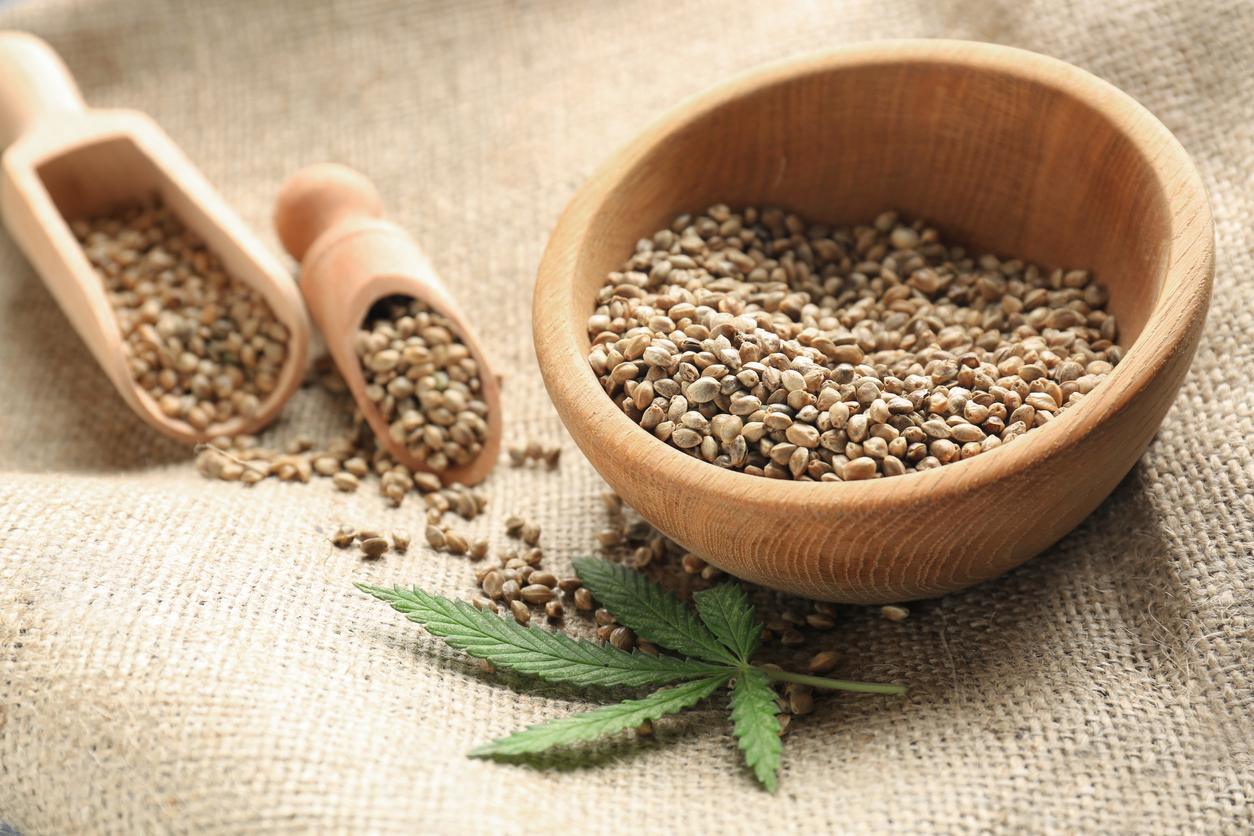In what President Trump called a “tremendous victory for the American farmer,” the 2018 Farm Bill was recently signed into law which legalized hemp at a federal level, and allows states to have programs for growing industrial hemp commercially. The new law allows for transporting hemp across state lines, expanding export and sales options. Now, crop insurance is available for hemp crops, making it less of a risk for farmers to produce, making room for farmers to expand their operation with hemp.
What is hemp?
Hemp, not to be confused with marijuana, is part of the Cannabis plant family. Cannabis contains a variety of different compounds called Cannabinoids, two of the most dominant are Tetrahydrocannabinol (THC) and Cannabidiol (CBD). Both Cannabinoids have shown to provide profound benefits to the human body; however, THC induces psychoactive effects (gets the user “high”), while CBD does not contain any psychoactive properties. Hemp contains a very low concentration of THC (0.3% or less), while marijuana is abundant in THC containing concentrations between 15% to 40%. Because of this, marijuana is grown for recreational and medicinal purposes, and hemp actually refers to the industrial, non-drug variant that is cultivated for its fiber, hurd, and seeds. The three different parts of the plant have different uses.
Hemp Seeds
The seeds are used mainly in dietary products and oils. Canada is the biggest producer of hemp seeds with over 84,000 acres licensed for cultivation in 2015.
Hemp Bast (Fiber)
Inside of the stalk is hemp’s famous bast fiber. The stalk and its fiber are used mainly in clothing, construction materials, paper, and more. China is the world’s biggest producer of hemp stalks, with the government claiming the hemp industry to be over $200M.
Hemp Shiv (Hurd)
The hemp hurd is the soft inner core of the hemp plant stem. It is highly absorbent and rich in cellulose and great thermal and acoustic properties. The hurd can be used a few different ways. As untreated and unrefined chunks, it can be used in a wide variety of industrial and everyday products, like cement, insulation and paper. As a form of pulp, it can be used to make biodegradable plastics which can be easily recycled.
Where did hemp come from?
Hemp arrived in Colonial America with the Puritans in the form of seed for planting, and as fiber in the lines, sails and caulking of the first ships brought to America. British sailing vessels were never without a store of hemp seed, and Britain’s colonies were compelled by law to grow hemp. The crop became especially important in New England, Maryland and Virginia during the years leading up to the Revolutionary War. Ironically, the first drafts of the Declaration of Independence were penned on hemp paper.
Hemp has been a fairly easy cash crop to grow since its beginnings in America. Compared to cotton, corn, and soybeans, it requires little water and isn't picky when it comes to poor soil. The plant grows tightly spaced, thus crowding out weeds, and boasts a deep, soil-aerating root system.
Economic Impact of Hemp
Since hemp import was legalized in 1998, the U.S. import volume has been continuously increasing over the years. Hemp imports to the U.S., consisting of hemp seeds and fibers, totaled $67.3 million in 2017, according to Congressional Research Service. The local consumer demand is there, which provides great opportunities for small businesses and American farmers to provide local supply.
AgMRC reports one acre of hemp can yield an average of 700 pounds of grain, which in turn can be pressed into about 22 gallons of oil and 530 pounds of meal. The same acre will also produce an average of 5,300 pounds of straw, which can be transformed into approximately 1,300 pounds of fiber.
Current U.S. Hemp Production
Before the Farm Bill was signed into law, U.S. producers of hemp could still legally grow it. Those producers had to obtain a permit from the Drug Enforcement Agency, since hemp was still linked to marijuana as a cannabis plant and classified as a controlled substance for decades. Although detailed market information for hemp is not readily available, estimates from Vote Hemp show that the total retail value of hemp products in the U.S. in 2017 was $820 million. As for growing, there were 25,713 acres in the U.S. dedicated to growing hemp in 2017, which is a major increase from the 9,770 acres reported in 2016. Even though that number increased, to give it context, that's the same amount of land Bill Gates bought in Arizona to create a small, futuristic city.
As for 2018, it may be no surprise that Colorado was the top hemp producer with 12,042 outdoor acres and 2.35 million square feet indoors growing the plant. Kentucky was a close second with 12,800 registered acres, as the crop is in high interest from former tobacco producers. Oregon (3,500 acres) and North Dakota (3,100 acres) were the next states with high growth rates.
Investing in Hemp
As U.S. farmers begin to grow more hemp, there will be much room for investments into the asset. Driven by explosive growth in hemp-based consumer products, the global hemp market is expected to jump to $10.6 billion by 2025. The hemp industry is certainly something to keep your eye on for the next few years.
Resources for More Info on Growing and Investing in Hemp
Interested in learning more? The Future of Agriculture podcast did a great double feature on opportunities and realities within the growing hemp industry.
Future of Agriculture 140: Hemp Opportunities and Realities Part 1 with Zev Paiss



